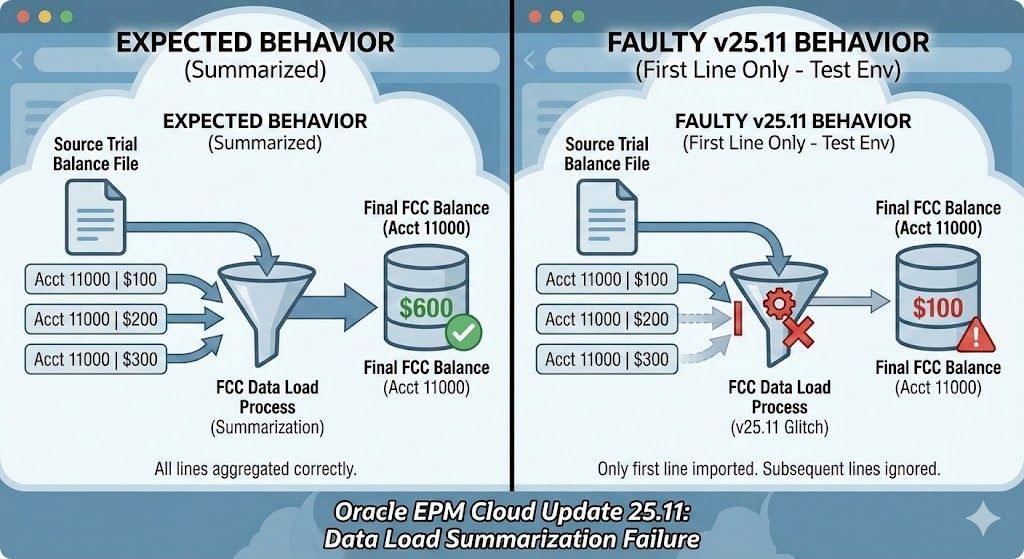The End-of-Life Opportunity in Financial Software
Nadia Lodroman | Oracle EPM Consultant | Integrity in Every Insight.
2 July 2025
Listen to Tresora and Ledgeron's chatting about this blog post:
Your Vendor Moved On, Why Haven't You? Embracing the End-of-Life Opportunity in Financial Software
The enterprise software landscape is in a constant state of flux. Vendors innovate, priorities shift, and inevitably, legacy systems reach their end-of-life (EOL). For many, this is a moment of apprehension, a looming disruption to established workflows. But what if we reframed this pivotal moment? What if, instead of a hindrance, it was a golden opportunity? This is the reality for thousands of businesses running on SAP ECC, as the 2027 deadline for mainstream maintenance looms. But this isn't just an SAP story; it's a critical lesson for any organization reliant on financial software.
The catchphrase isn't just a catchy title; it's a direct question every business leader should be asking. Your software vendor has moved on to a more modern, capable, and future-proof solution. The question is, why are you still clinging to the past?
The end of life for a critical piece of software like SAP ECC, or any other core financial platform, is more than just a technical milestone. It's a clear signal that the tools you've relied on are no longer aligned with the future of business. Continuing to operate on an unsupported system is akin to navigating a modern highway with a horse and buggy – it might still move, but it's slow, risky, and fundamentally ill-equipped for the journey ahead.
The risks are tangible and significant. Without vendor support, you're exposed to mounting security vulnerabilities, a lack of new functionalities to meet evolving business demands, and the ever-present danger of compliance issues. The world of finance is a primary target for cybercriminals, and running on unsupported software is like leaving the vault door wide open.
Beyond the Fear: Seizing the Inevitable Upgrade
While the initial reaction to an EOL announcement can be one of fear and frustration due to the perceived costs and complexities of migration, it's crucial to see beyond the immediate hurdle and recognize the immense opportunity it presents. This forced re-evaluation is a chance to fundamentally improve the way your organization operates.
Instead of defaulting to the prescribed upgrade path, view this as a mandate to explore the vibrant and competitive landscape of modern financial software. The market has evolved significantly since your legacy system was first implemented. Today's solutions from a variety of innovative vendors offer compelling advantages:
- Increased Agility and Flexibility: Many modern, cloud-native solutions offer greater flexibility to adapt to changing business models. You are no longer tied to the rigid structures of older, monolithic systems.
- Best-of-Breed Options: You now have the chance to select the best possible tool for each specific job. Instead of a one-size-fits-all approach, you can integrate specialized, high-performing solutions for accounting, planning, analytics, and compliance, creating a truly tailored technology stack.
- Improved Cost-Effectiveness: Don't assume the designated upgrade is the most financially sound option. A full market evaluation may reveal solutions with a lower total cost of ownership (TCO), more predictable subscription pricing, and less reliance on expensive, specialized consultants.
- Superior User Experience: The standard for user interfaces has been set by consumer technology. Many alternative solutions are built from the ground up with the user in mind, leading to faster adoption, increased productivity, and less need for extensive training.
The end of support for your current system is the perfect catalyst to break free from vendor lock-in. It’s a chance to ask a powerful question: If we were choosing a financial system for the very first time today, what would we select? The answer might be very different from the path your current vendor has laid out for you. This is your opportunity to find a solution that fits your business, rather than forcing your business to fit a solution.
A Universal Truth for All Financial Software
This narrative extends far beyond the realm of SAP. Countless businesses rely on a myriad of financial software solutions for everything from accounting and invoicing to payroll and compliance. The principle remains the same: clinging to outdated, unsupported software is a strategic liability.
The end-of-life for any software should trigger a period of introspection. Ask yourselves:
- Are our current processes as efficient as they could be?
- Is our data providing us with the insights we need to thrive in a competitive market?
- Are we agile enough to adapt to changing business models and customer expectations?
- Is our current system a foundation for future growth or a barrier to it?
Embracing the Change: A Practical Approach
Approaching this transition with an open mind is the first and most critical step. Instead of viewing it as a forced march, see it as a strategic initiative to future-proof your business. Here’s how:
- Conduct a Thorough Assessment: Understand your current pain points and limitations. What are the biggest bottlenecks in your financial processes? Where are the opportunities for improvement?
- Define a Clear Vision: What do you want to achieve with a new system? Don't just aim for a like-for-like replacement. Think about how you can leverage new technology to transform your operations.
- Engage Your Team: This is not just an IT project; it's a business transformation. Involve key stakeholders from across the organization to ensure the new system meets everyone's needs and to foster a sense of ownership.
- Seek Expert Guidance: Migrating a core financial system is a complex undertaking. Don't be afraid to bring in external experts who have experience with these types of projects. Their knowledge can help you avoid common pitfalls and ensure a smoother transition.
The message is clear: the future of your business depends on the technology that powers it. When your software vendor signals that it's time to move forward, it's not a suggestion; it's a strategic imperative. Don't be left behind in the technological past. Embrace the change, seize the opportunity, and build a financial foundation that will not only support your business today but propel it into the future. Your vendor has moved on. It’s time you did too.
Turning financial complexity into operational clarity. Because in Finance, Integrity is Permanent.






